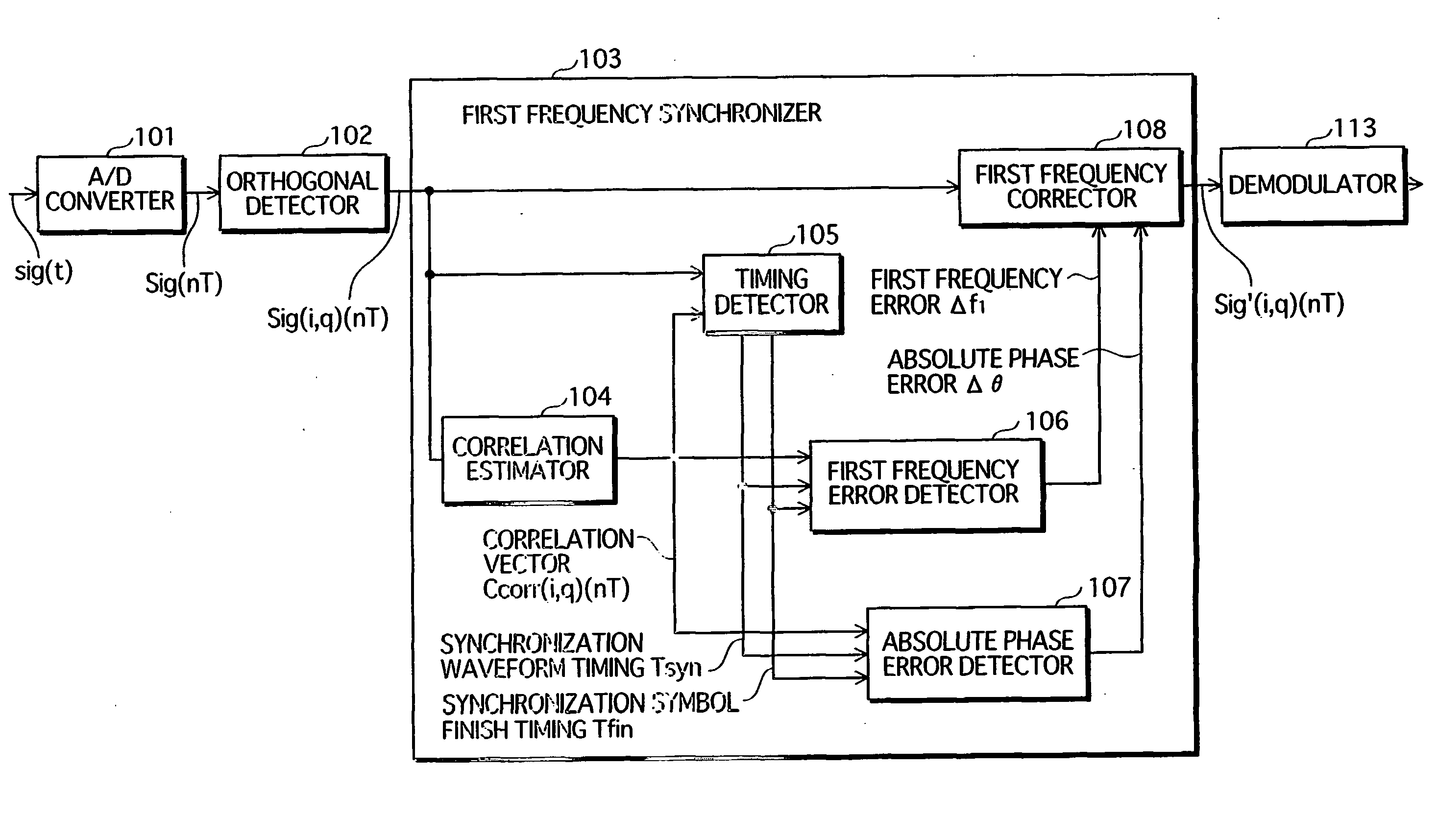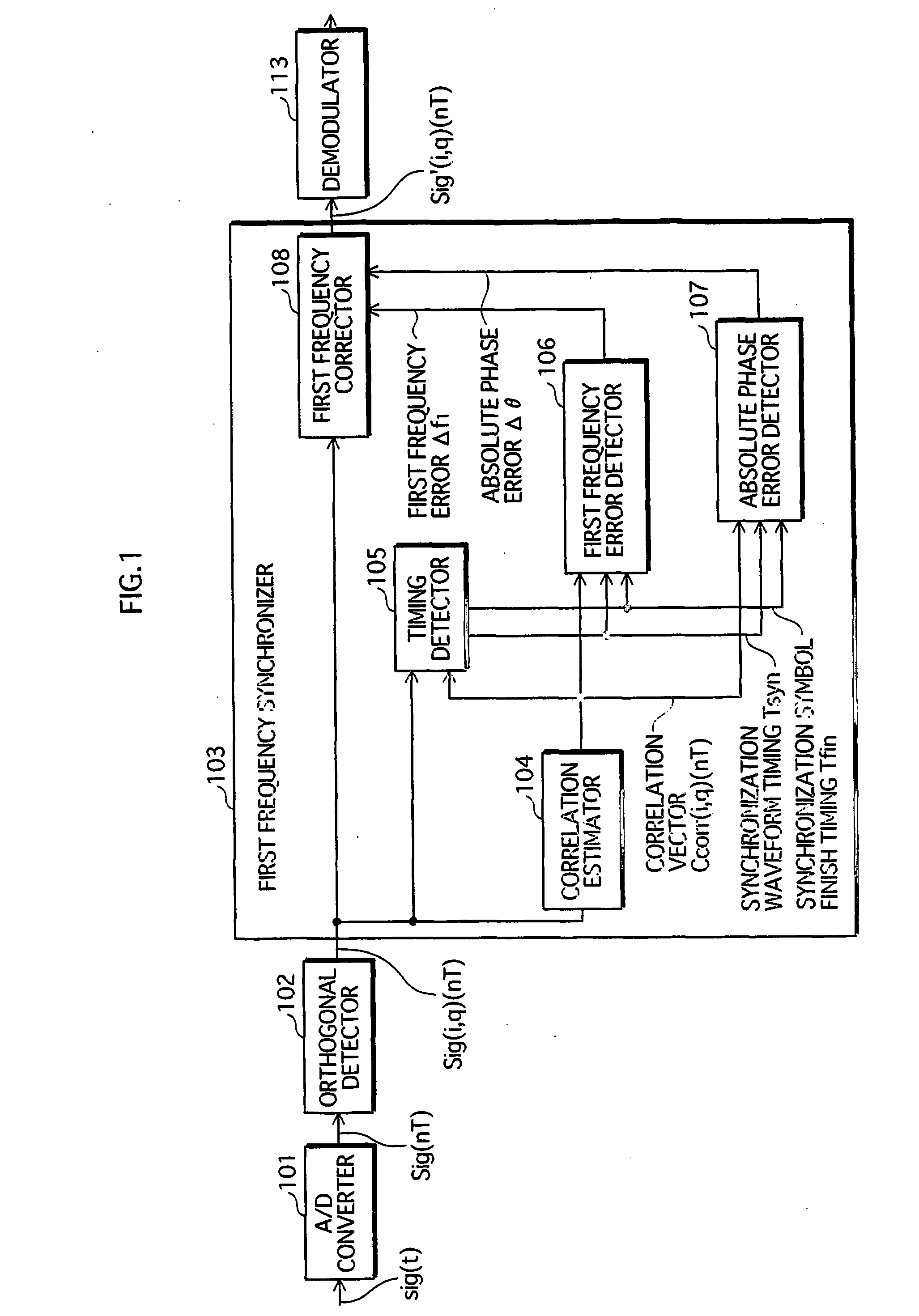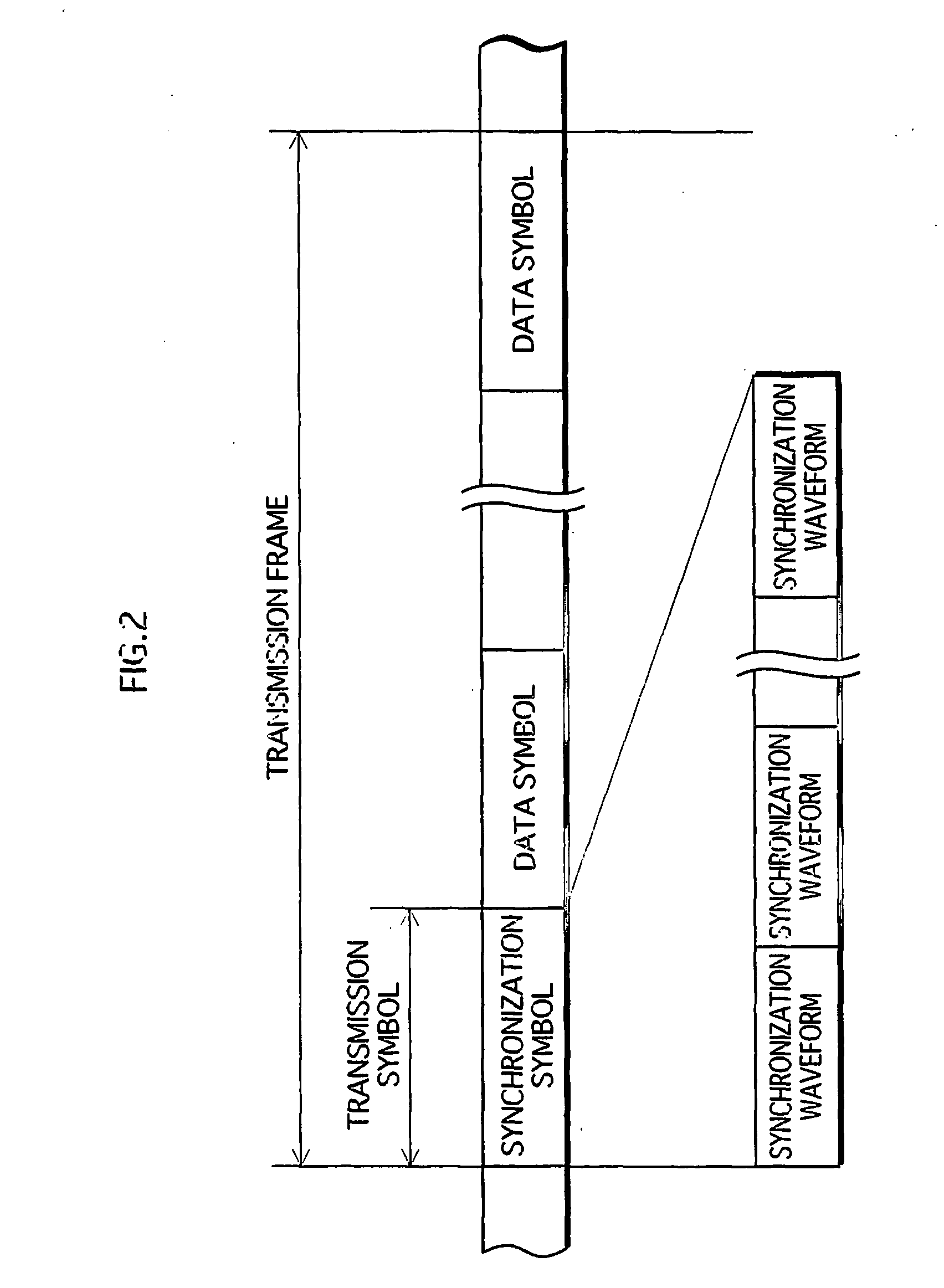Frequency synchronization apparatus and frequency synchronization method
a frequency synchronization and frequency synchronization technology, applied in the direction of synchronization signal speed/phase control, digital transmission, electrical apparatus, etc., can solve the problem that the reception apparatus cannot obtain the original transmission data correctly, the absolute phase of the reception signal cannot be corrected, and the bit error rate increases
- Summary
- Abstract
- Description
- Claims
- Application Information
AI Technical Summary
Benefits of technology
Problems solved by technology
Method used
Image
Examples
first embodiment
[0062] The following describes a frequency synchronization apparatus of a first embodiment with reference to the drawings.
[0063]
[0064]FIG. 1 is a functional block diagram showing the overall structure of the frequency synchronization apparatus of the first embodiment, together with part of the wireless reception apparatus that is the higher apparatus. In FIG. 1, a first frequency synchronizer 103 corresponds to the frequency synchronization apparatus, and an A / D (analog / digital) converter 101, an orthogonal detector 102, and a demodulator 113 correspond to part of the wireless reception apparatus.
[0065] The reception signal is converted to a signal sig(t) of an intermediate frequency selected appropriately by a tuner (not illustrated) in the wireless reception apparatus. The A / D converter 101 converts the signal sig(t) to a time series digital signal Sig(nT), and the orthogonal detector 102 obtains a baseband orthogonal component signal Sig(i,q)(nT) by performing orthogonal detect...
second embodiment
[0115] The frequency synchronization apparatus of the second embodiment differs from the frequency synchronization apparatus of the first embodiment in that it has added holders that hold the first frequency error f1 and the absolute phase error θ, and it corrects the reception signal according to the first frequency error f1 and the absolute phase error θ held by the holders.
[0116] The following describes the frequency synchronization apparatus of the second embodiment with reference to the drawings. Note that structural elements that are the same as in the first embodiment have the same reference numbers thereas, and are omitted from the following description.
[0117]FIG. 10 is a functional block diagram showing the overall structure of the frequency synchronization apparatus of the second embodiment, together with part of the wireless reception apparatus that is the higher apparatus. In FIG. 10, a first frequency synchronizer 115 corresponds to the frequency synchronization appar...
third embodiment
[0126] The frequency synchronization apparatus of the third embodiment differs from the frequency synchronization apparatus of the second embodiment in that it additionally includes a second frequency synchronizer that performs frequency synchronization in compliance with a modulation method. The second frequency synchronizer corrects the frequency error of the reception signal by, for example, finding a time series of information symbols by demodulating the reception signal, and detecting an amount of shift of a symbol point either every one or plurality of symbols.
[0127] The following describes the frequency synchronization apparatus of the third embodiment with reference to the drawings. Note that structural elements that are the same as in the second embodiment have the same reference numbers thereas, and are omitted from the following description.
[0128]FIG. 11 is a functional block diagram showing the overall structure of the frequency synchronization apparatus of the third e...
PUM
 Login to View More
Login to View More Abstract
Description
Claims
Application Information
 Login to View More
Login to View More - R&D
- Intellectual Property
- Life Sciences
- Materials
- Tech Scout
- Unparalleled Data Quality
- Higher Quality Content
- 60% Fewer Hallucinations
Browse by: Latest US Patents, China's latest patents, Technical Efficacy Thesaurus, Application Domain, Technology Topic, Popular Technical Reports.
© 2025 PatSnap. All rights reserved.Legal|Privacy policy|Modern Slavery Act Transparency Statement|Sitemap|About US| Contact US: help@patsnap.com



